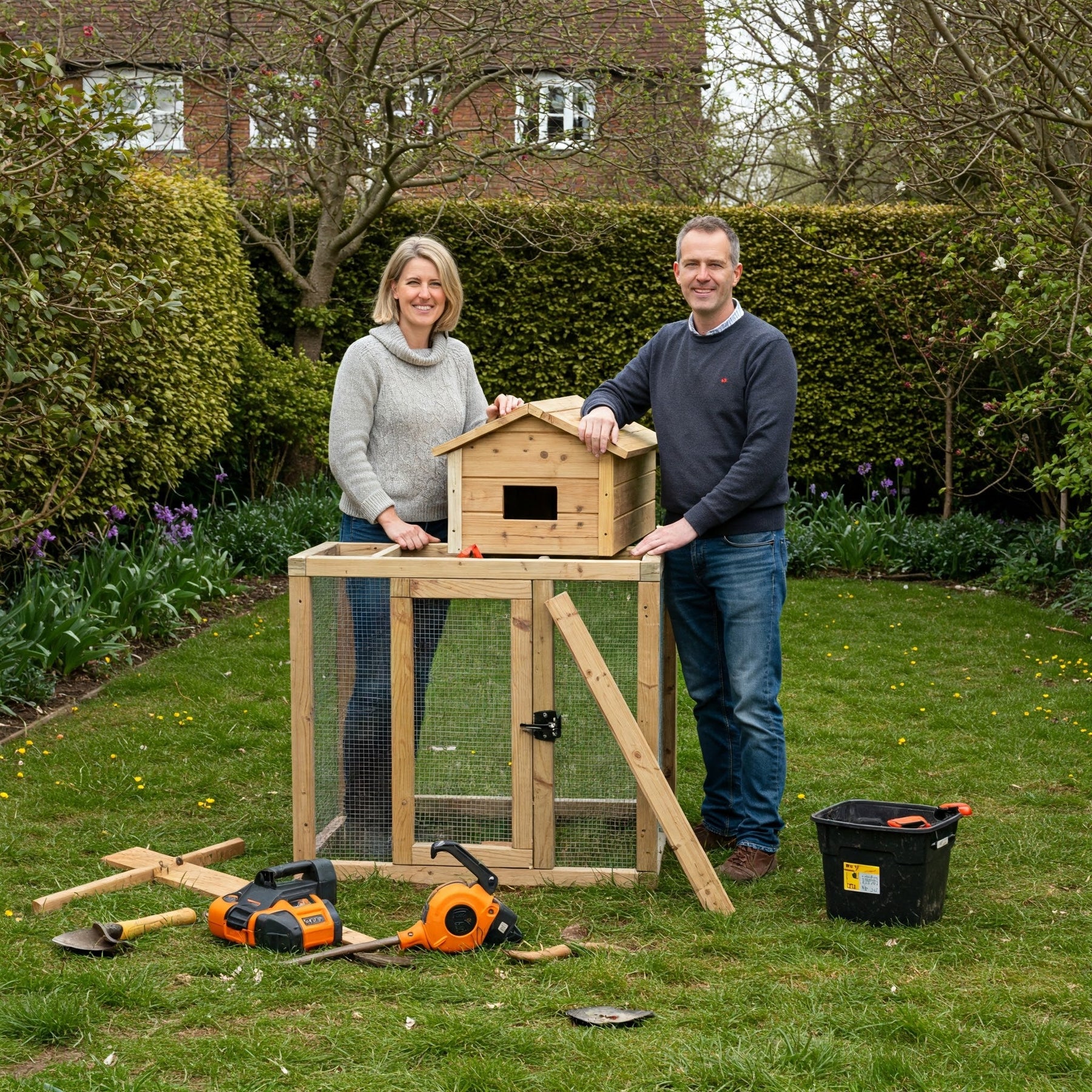
Setting Up a Chicken Run: A Step-by-Step Guide
A well-planned chicken run keeps your flock safe, active, and healthy. It provides space to forage while protecting from predators. If you're researching chicken runs before buying, this guide will help you understand what to consider.
1. Choosing the Right Location
Just like we Brits say about buying a house, the most important factor is location, location, location.
- Avoid damp areas. Chickens prefer dry ground. Low-lying spots can become muddy and cause health issues.
- Choose a sheltered spot. Trees, fences, or walls can provide wind protection.
- Ensure good drainage. A slight slope helps water run off instead of pooling.
- Consider convenience. Position the run where it's easy to access for feeding, cleaning, and egg collection.
2. Selecting the Best Size and Design
A chicken run should provide enough space for your birds to move freely. Giving chickens enough space can reduce stress and improve their happiness. Overcrowding can also lead to health problems.
- Minimum space: Plan for at least 8–10 square feet per chicken.
- Bigger is better: Give them as much space as possible if you have the room.
- Height considerations: A run should be tall enough for you to enter easily. If using a lower run, ensure you have good access to change their food and water.
- Shape and layout: Rectangular runs fit well against coops, while larger spaces can be shaped to fit your garden.
3. Choosing the Right Materials
A strong, well-built run protects your chickens from predators and bad weather.
- Frame materials: Wood and metal are the most common choices. Wood blends into the garden, while metal lasts longer and requires less maintenance.
- Mesh options: Use galvanised mesh or chicken mesh, and consider how fox-proof it needs to be. Chicken wire keeps chickens contained but does not stop foxes or rats.
- Roofing: A covered run protects against rain, sun, and predators. Options include clear plastic panels, shade netting, Tarpaulins or a fully enclosed roof.
4. Ground Cover and Weather Protection
The right ground cover improves drainage and keeps your chickens comfortable, especially in wet weather.
- Hardstanding areas: Gravel, paving slabs, or concrete in high-traffic areas help prevent mud buildup.
- Wood chippings: A natural option that absorbs moisture and reduces muddiness.
- Sand: Drains well and allows chickens to scratch and dust bathe.
- Straw: Straw can be used, but never use hay as it is dangerous for hens.
- Raised areas: Adding pallets, bricks, or logs gives chickens dry spots to stand on when the ground is wet.
5. Predator-Proofing Your Chicken Run
Foxes, rats, and birds of prey are common threats. A secure run prevents attacks and keeps your chickens safe.
- Bury the mesh: Dig the fencing at least 6-12 inches into the ground to stop foxes from digging underneath.
- Secure the doors: Use strong latches that other animals cannot easily open.
- Cover the top: Even if you don't fully enclose the run, use netting or wire mesh to stop aerial predators.
- Check for gaps: Inspect the run regularly for small holes where rodents or predators could enter.
6. Adding Enrichment for a Happy Flock
A well-set-up chicken run isn't just about safety. Your chickens need stimulation to stay active and healthy.
- Perches: Adding different levels for roosting encourages natural behaviour.
- Dust baths: A shallow area filled with dry soil or sand helps them clean their feathers.
- Hiding spots: Bushes, logs, or small shelters give them places to rest and feel secure.
- Toys and treats: Hanging vegetables, pecking block treats, mirrors, or simple obstacles keep them engaged.
7. Maintaining Your Chicken Run
Regular maintenance keeps the run clean and safe.
- Rake the ground: Prevents waste buildup and reduces the risk of disease.
- Check fencing and latches: Look for damage or weak spots where predators could enter.
- Refresh dust baths: Keep the area dry and clean to maintain its benefits.
- Rotate the run (if possible): Moving the run from time to time prevents the ground from becoming bare and compacted.
Creating a good chicken run can really boost the health and happiness of your flock. By selecting the right spot, using suitable materials, and ensuring proper security, you're making a safe and cosy environment for your birds. Whether you're putting together your first run or looking to make improvements to an existing one, these tips will guide you in the right direction.
Once your chicken run is set up, the next step is ensuring you have all the essential equipment to keep your flock happy and healthy. From feeders and drinkers to perches and nesting boxes, having the right supplies makes chicken keeping much easier. Read our Essential Equipment for New Chicken Owners guide to ensure you're fully prepared.
